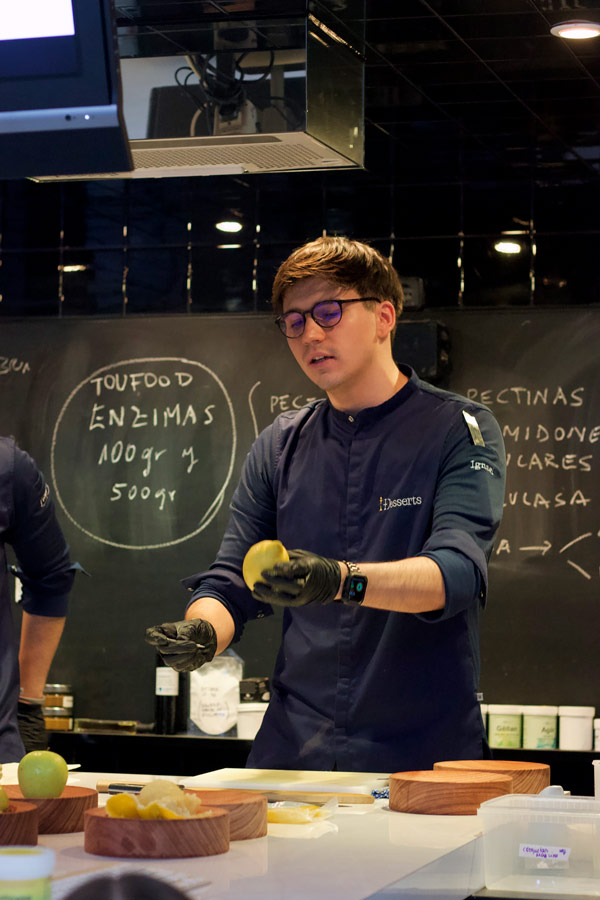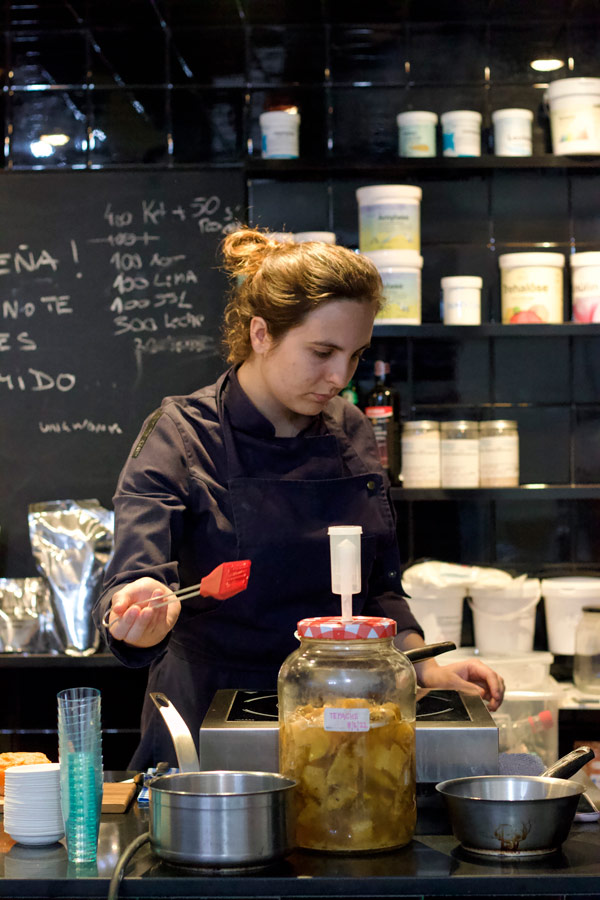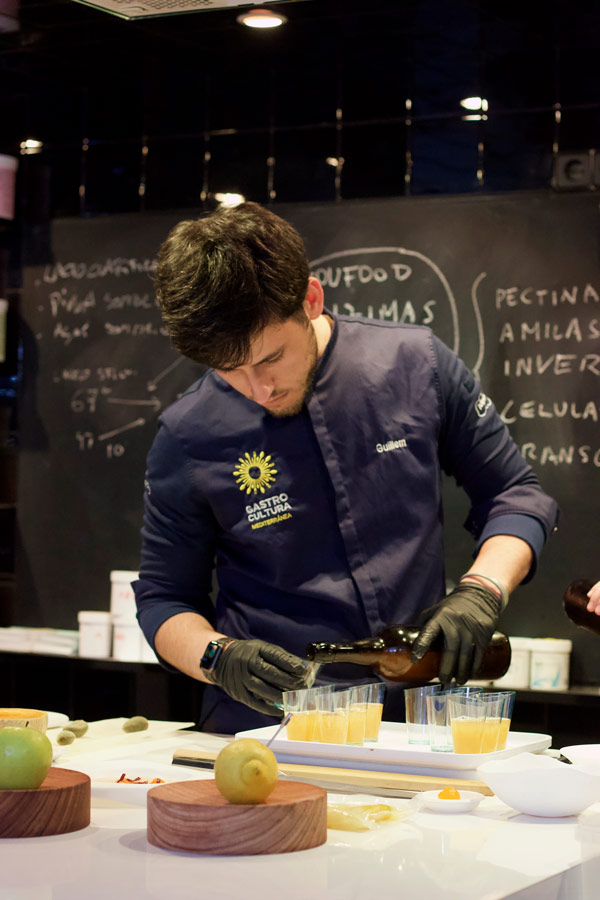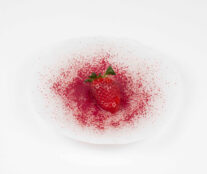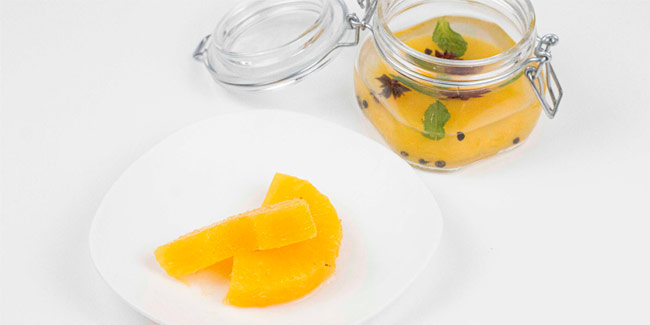
Enzymes are naturally occurring proteins present in most plant or animal foods that we consume on a daily basis. Applied to food products, they can be used to modify some of their properties. They are commonly used to improve and transform products on an industrial scale, but until now very few restoration methods and applications have been developed.
Gastrocultura Mediterránea, which has launched the Töufood enzyme line for gastronomy in collaboration with i+Desserts, explores in this article the uses and applications of pectinase, invertase, and amylase. These three enzymes allow a significant gastronomic result to be obtained by themselves and that have great potential in pastry, as we show through examples of dishes made by i+Desserts.
PECTINÄSE
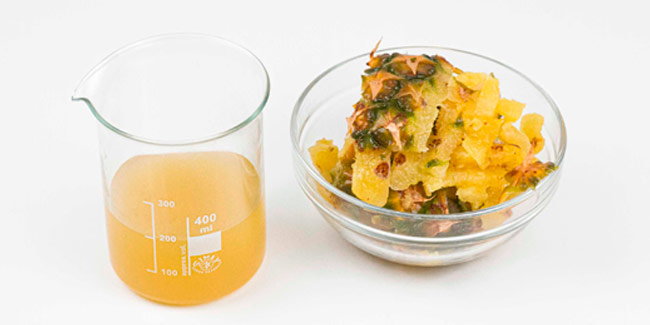
Pectinase is the enzyme responsible for degrading pectin, one of the main components that form the cell wall of vegetables. Depending on each vegetable, pectin will be more concentrated in the skin, the interior, or distributed throughout the piece.
By using Pectinäse, it is possible to soften various plant parts, such as stems and skins, which are normally discarded; peel fruits and vegetables very easily, blend, clarify their juices, and other applications. In this way, the benefits are reduced production times and costs, increased yields and waste management, and improved product properties.
How is it used?
To activate the enzyme, you have to hydrate it with water or a juice and put it in contact with the pectin in the food.
- Impregnate: The enzyme is distributed evenly throughout the piece.
- Injection: The interior is degraded while the exterior remains intact.
- Sprinkle or dip: The exterior is degraded while the interior remains intact.
Applications
- Degradation: Soften and change the texture of fruits and vegetables.
- Dehydration: Degradation technique + drying with application of heat. If the products that have been treated with enzymes are dried, we concentrate the resulting sugars, obtaining a final product that is firm on the outside, with a creamy interior and a high proportion of its natural sugars.
- Liquefied: Extreme degradation technique + filtering. Applying the degradation technique for a very long time, a completely liquid product is obtained, since all the pectin present in the food is degraded. Applying a filtering technique to remove the parts that have not completely degraded, a cold liquefied product is obtained.
- Clarification: Clarify vegetable juices and smoothies keeping all the flavor of the initial ingredient. Since the fibers are broken at the cellular level, a much higher yield is achieved compared to traditional techniques.
- Peeling: Peeling of fruits and vegetables. Generally, pectin is found in the skin of fruits and vegetables, so applying pectinase breaks down the pectins in the skin, allowing vegetables to be peeled very easily.
Examples of desserts with Pectinäse
Lemon Ice Cream
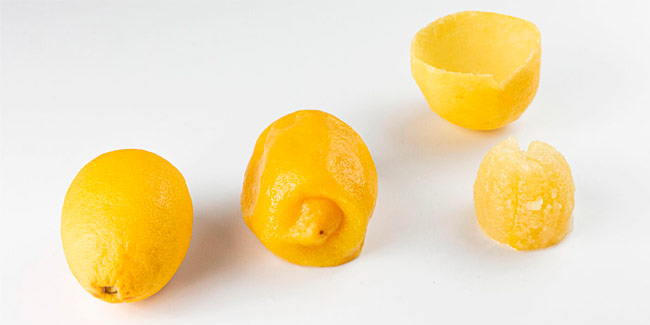
In the Lemon Ice Cream, Pectinäse is used to facilitate the use –in its entirety– of the fruit. Once the enzymes have acted, the entire skin can be separated from the segments, the albedo, and even the lágrimas.
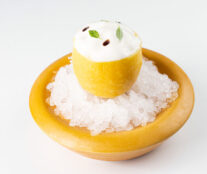
Strawberries with cream
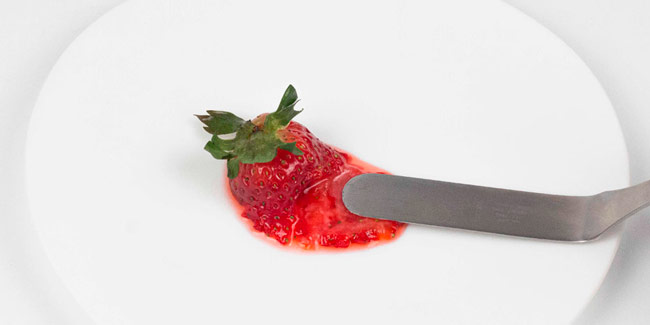
The texture of the strawberry is modified while hardly modifying its appearance. The result: a soft and melting strawberry, accompanied by strawberry sauce cooked with butter, black pepper, and burnt milk ice cream.
INVESTÄSE
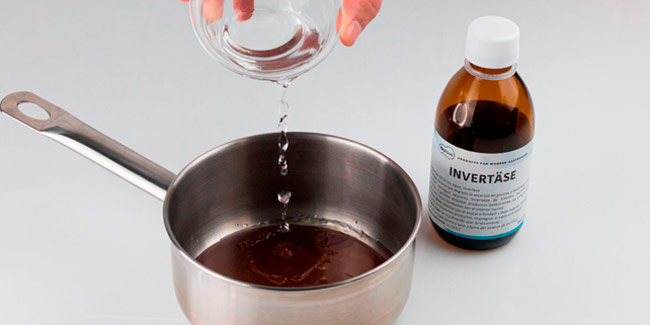
Invertase is the enzyme that breaks down sucrose (table sugar) into its elemental sugars, i.e. fructose and glucose. This mixture of elemental sugars is also known in gastronomy as invert sugar. These enzymes are obtained through the yeast, S. cerevisiae.
It has many applications in gastronomy since, with the right conditions of use, it allows invert sugar to be generated, which has anti-crystallizing properties, and because the mixture of glucose and fructose is sweeter than sucrose, it allows the treated product to be sweetened without adding any sweetener. In this way, you can get inverted sugars from different sugars such as muscovado or panela, liquefy fondant to use in pastry and bonbon making to make chocolates with a liquid interior, or get sweet ingredients that are not originally sweet.
How is it used?
To activate the enzyme, you have to hydrate it with water or a juice and put it in contact with the sucrose in the food.
- Impregnate: The enzyme is distributed evenly throughout the piece.
- Injection: The interior is degraded while the exterior remains intact.
Applications
- Sweetener: Naturally sweeten without adding sugar. By breaking down the sucrose (sugar) molecule present in different ingredients (usually sweet fruits and vegetables), they are separated into dextrose and fructose. These two products are much sweeter than when combined, so the product sweetens itself.
- Liquefied sugar: Liquefied fondant and candy. By mixing Invertäse into a fondant, icing, or sugar-based preparation, it liquefies over time. This technique allows you to make chocolates with a liquid interior and sugar syrups.
Examples of desserts with Invertäse
Pineapple in sugar-free syrup
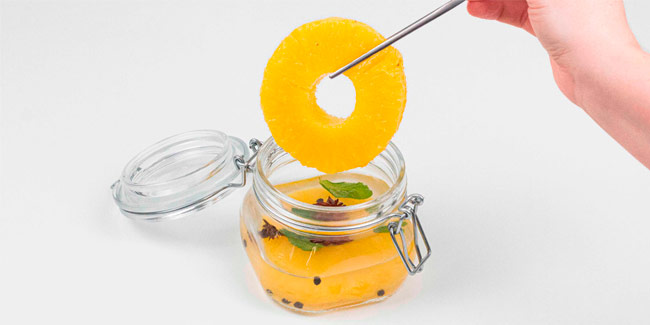
By applying the Invertäse enzyme to the sucrose present in pineapple, it is possible to degrade them into glucose and fructose, increasing their sweetening power and liquefying the structure; thus achieving a “pineapple in syrup” without adding sugar.
After-Eight
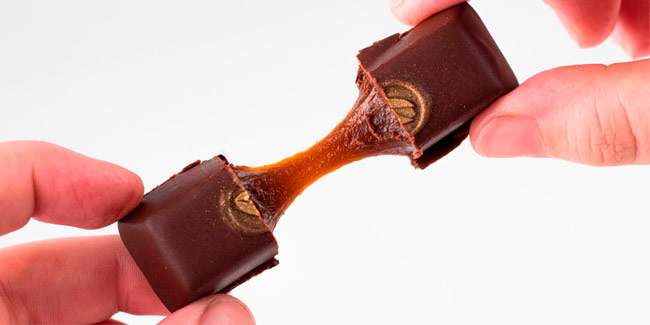
Using the Invertäse enzyme, bonbons or chocolates can be made with a solid interior that will progressively liquefy enzymatically, until it becomes a creamy/liquid caramel.
AMYLÄSE
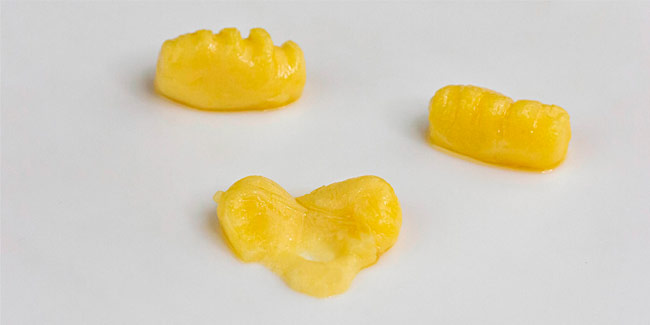
Amylase is an enzyme that has the ability to hydrolyze starch, obtaining chains of dextrins and free sugars. In this way, it changes the structure of starches giving them different textures and properties. It is an enzyme widely used in the industry, mainly in bakery, and is present in almost all flour-based preparations for confectionery or fermented dough.
Using Amyläse, starches can be degraded so that, by releasing sugars, the product is sweetened without adding sweeteners and the fermentative power of the mixture is increased.
How is it used?
To maximize its enzymatic performance, it should be used with gelatinized starches, that is, with the cooked product.
- Dry: It is applied directly (in powder form) on the product to be degraded, obtaining a higher yield with the previously crushed product.
- Impregnation: By previously making multiple holes in the product, and adding the enzymatic solution, a homogeneous degradation is achieved throughout the product.
- Injection: Internal enzymatic degradation is achieved, leaving the exterior intact.
Applications
- Degradation: Change the structure of starchy products, achieving liquid structures in typically dense products.
- Liquefied: Extraction of the water retained in the starch. When using Amyläse, the starch macromolecule breaks down and loses its ability to gelatinize and retain water.
Examples of desserts with Amyläse
Brioche without added sugar
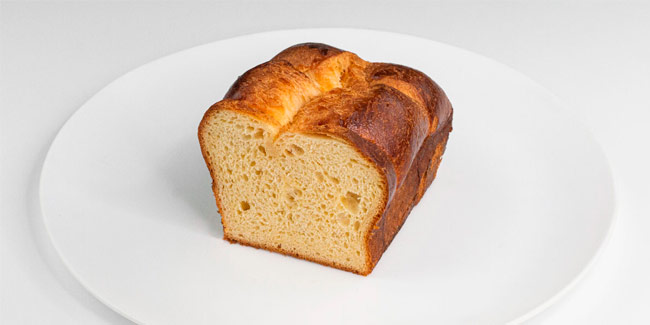
The Amiläse enzyme is capable of acting on damaged starches during the milling process of wheat flour. The presence of this type of starch is used to degrade them and thus sweeten and ferment our doughs, without adding sugar.
Panellet
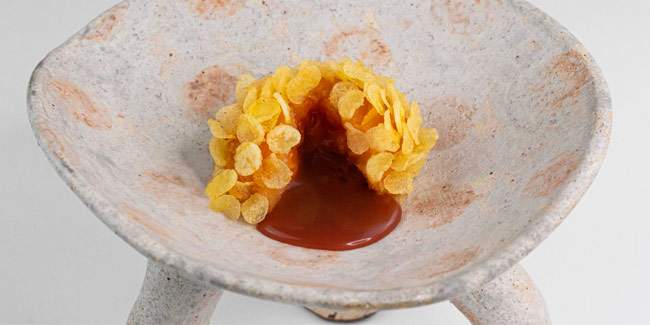
By breaking down the starch molecules present in the sweet potato, the water they trap can be released to achieve a traditional preparation such as the sweet potato and potato panellet without the need to add sugar.
Sweet potato and tangerine ravioli
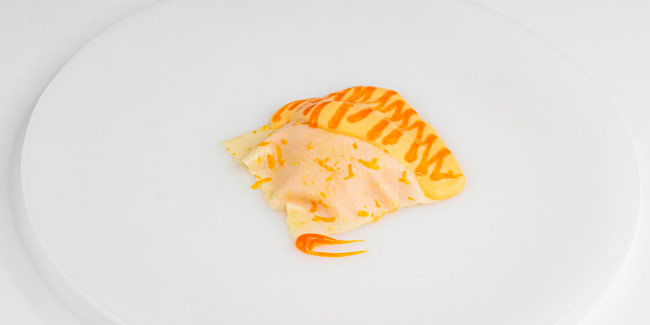
Sweet potato puree ravioli with sweet potato sabayon and tangerine beurre blanc; “painted” with reduction and tangerine skin.
Combining Amyläse and Glucosidäse can sweeten a starchy product; in this case a sheet of pasta, to make a ravioli. And, with the same synergy (Amyläse and Glucosidäse), extract sweet potato molasses without added sugar.
Popcorn ice cream
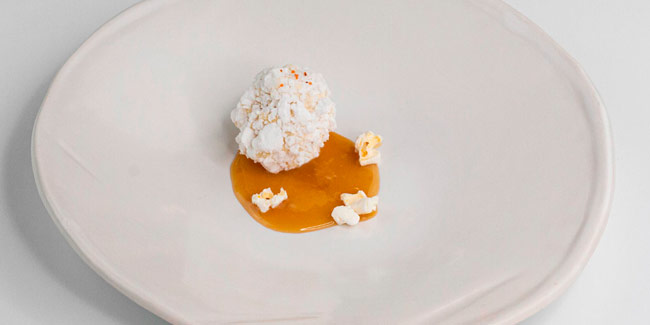
By applying the enzymatic synergy of Amyläse, and Glucosidäse, the starches and dextrins present in popcorn, molasses, or ice cream can be transformed.
The result: Popcorn ice cream, topped with nitro popcorn with lime foam and salty popcorn honey.
Crunchy potato
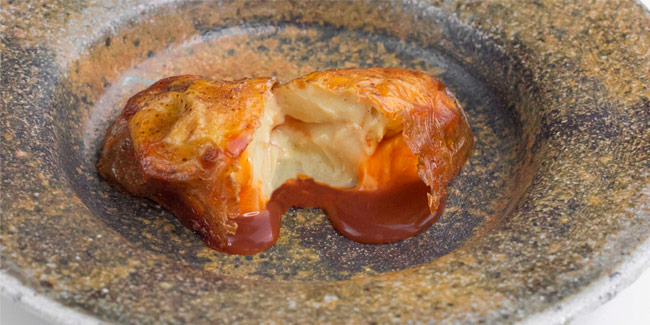
In the skin, amylase is used to caramelize it without adding sugars, and in ice cream its use is essential since the structure of the starch interferes with the crystallization of the ice cream, affecting the freezing point and, therefore, its texture.
